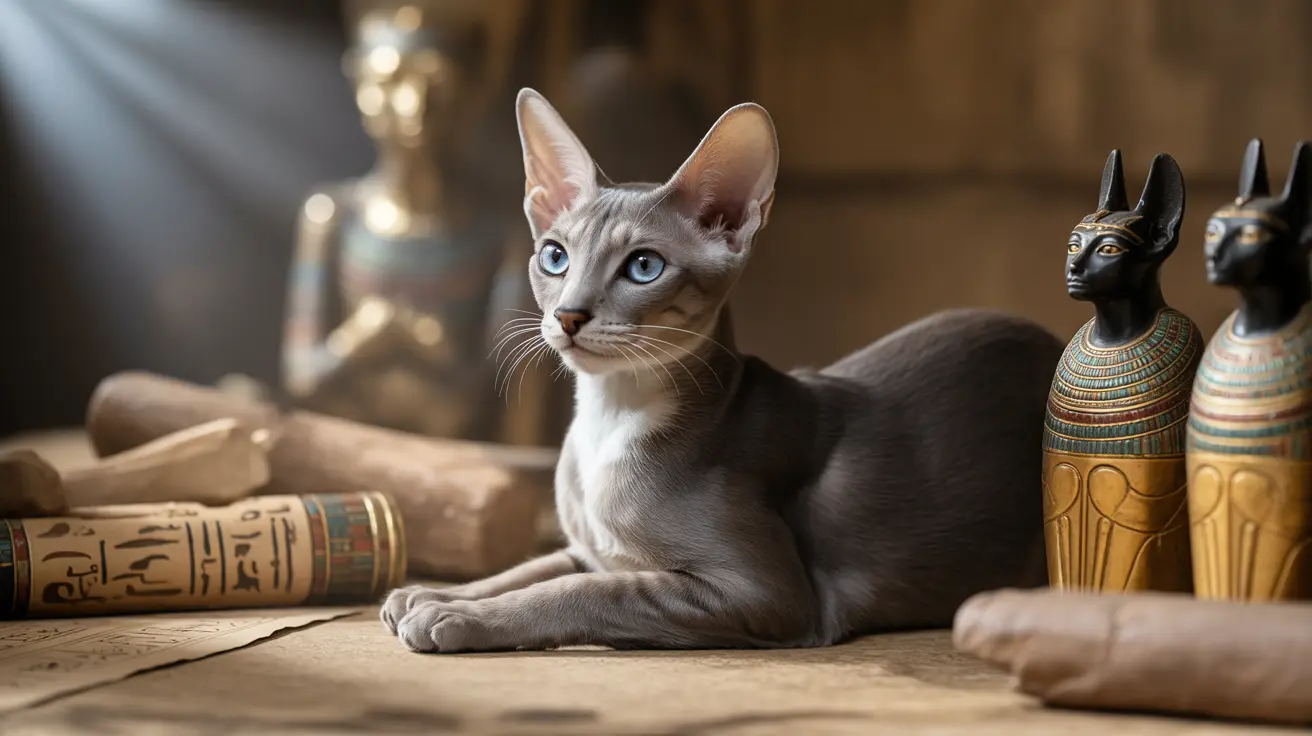Throughout history, black cats have played a fascinating role in shaping human culture, beliefs, and traditions. From their sacred status in ancient civilizations to their modern-day presence in pop culture, these enigmatic felines have left an indelible mark on our collective imagination.
Let's explore some of the most famous black cats throughout history and discover how these mysterious creatures have influenced societies across time and cultures.
Ancient Egyptian Black Cats: Sacred Symbols of Divinity
In ancient Egypt, black cats held an extraordinarily privileged position. These elegant creatures were deeply connected to the goddess Bastet, who represented protection, fertility, and domestic harmony. The punishment for harming a black cat was severe, often resulting in death, highlighting their sacred status in Egyptian society.
Archaeological evidence shows that Egyptians would mummify their beloved black cats, often adorning them with precious jewels and elaborate wrappings, demonstrating their elevated status in both life and death.
Legendary Black Cats in European History
Charles I's Lucky Black Cat
One of history's most notable black cats belonged to England's King Charles I. The monarch believed his black cat brought him tremendous luck, and eerily enough, he was arrested the day after his beloved pet died. This historical coincidence only strengthened the supernatural associations of black cats in European folklore.
The Heroic Kidwelly Cat
In Wales, the black cat of Kidwelly became a symbol of survival and resilience when it emerged as the sole survivor of the devastating Black Death in its town. This remarkable story transformed local attitudes toward black cats, making them symbols of hope rather than harbingers of doom.
Black Cats in Mythology and Folklore
Norse mythology features the goddess Freya's chariot being pulled by two powerful black cats, representing strength and grace. In Celtic folklore, the mysterious Cat Sith, a supernatural black cat, was believed to possess the ability to steal souls and shape-shift, adding to the mystical aura surrounding these creatures.
Modern Pop Culture Icons
Salem Saberhagen and Beyond
Contemporary entertainment has given us numerous memorable black cats, with Salem from "Sabrina the Teenage Witch" being perhaps the most recognizable. His witty personality and magical abilities helped reshape public perception of black cats from ominous to endearing.
Thackery Binx and Other Film Felines
Disney's "Hocus Pocus" introduced audiences to Thackery Binx, a centuries-old black cat with a tragic yet heroic backstory. This character, along with others like the mysterious black cat from "Coraline," has helped create more positive associations with black cats in modern media.
Contemporary Challenges and Changing Perceptions
Despite their rich history and cultural significance, black cats still face challenges in modern society. The "black cat syndrome" continues to affect adoption rates in shelters, though awareness campaigns and social media are helping to combat these outdated superstitions.
Organizations worldwide now celebrate Black Cat Appreciation Day, promoting these beautiful animals and educating the public about their unique qualities and charm.
Frequently Asked Questions
Why are black cats considered lucky in some cultures but unlucky in others?
Cultural perspectives on black cats vary based on historical events and religious beliefs. In Japan and parts of Britain, black cats are considered lucky charms, while medieval European superstitions labeled them as unlucky due to their association with witchcraft.
What is the historical significance of black cats in ancient Egypt and Celtic folklore?
In ancient Egypt, black cats were sacred animals associated with the goddess Bastet and were protected by law. In Celtic folklore, they were believed to be magical creatures capable of shape-shifting and were associated with the supernatural realm.
How did black cats become associated with witches and superstition in medieval Europe?
During the Middle Ages, the Catholic Church's persecution of alleged witches led to black cats being labeled as witches' familiars. This association, combined with general superstition about their dark coloring, created lasting negative stereotypes.
What are some famous black cats in pop culture and mythology?
Notable examples include Salem from "Sabrina the Teenage Witch," Thackery Binx from "Hocus Pocus," the Norse goddess Freya's chariot-pulling cats, and the Celtic Cat Sith.
Why do black cats face adoption challenges, and how can owners help overcome the "black cat syndrome"?
Black cats often face longer shelter stays due to lingering superstitions and the fact that they're harder to photograph effectively. Supporting black cat adoption events, sharing positive stories, and educating others about their loving nature can help overcome these challenges.






